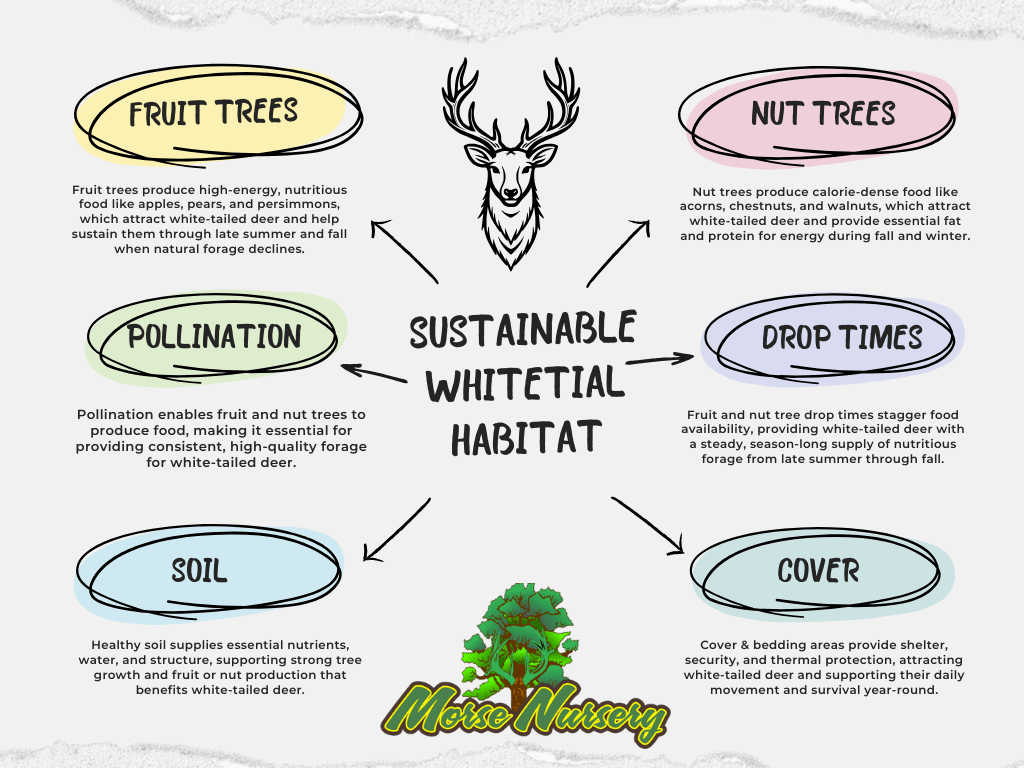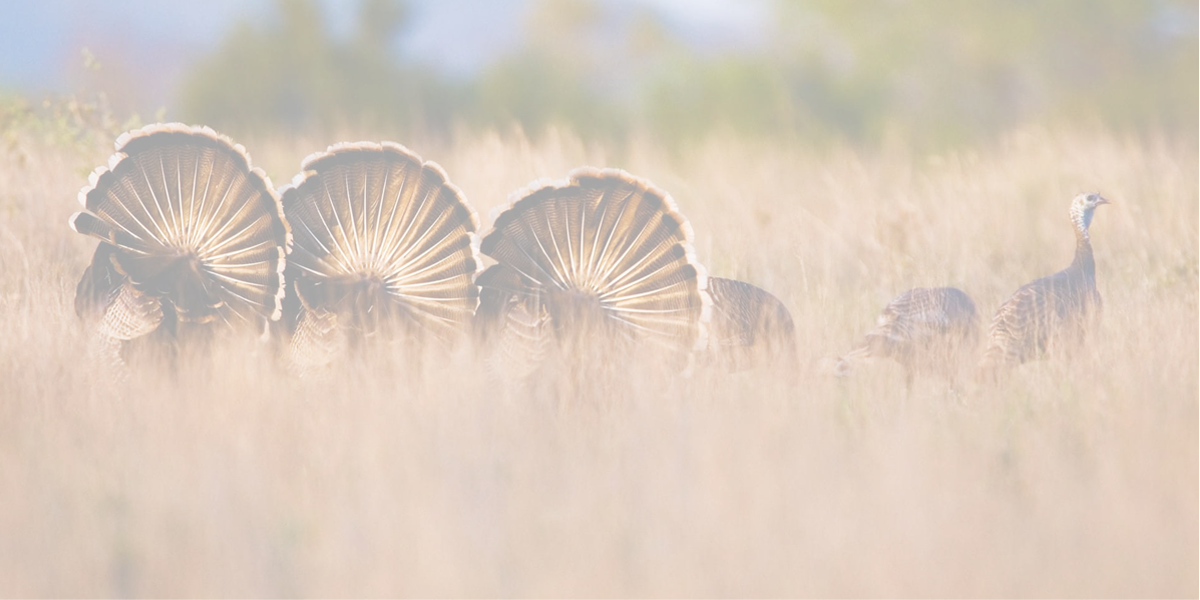How to Choose the Best Trees for Deer Habitat and Food Plots
Are you a landowner looking to attract more deer and improve your hunting property? Choosing the right trees for your food plot or deer habitat can make a huge difference in long-term wildlife nutrition, deer movement, and overall land value.
But not all trees are created equal—and not all will thrive on your property.
In this guide, we’ll walk you through everything you need to consider before buying and planting trees for your deer habitat. From fruit drop timing to soil compatibility and pollination, we’ll help you make the best investment for your land and your hunting goals.
Why the Right Trees Matter for Deer Habitat
If your food sources aren’t available during key parts of hunting season, you're going to spend a lot of long, quiet days in the stand. Let’s say you bought some Honeycrisp apple trees from a local retailer and planted them everywhere. Sounds good, right?
Not exactly.
Honeycrisp apples ripen and drop from August to early September. By the time hunting season rolls around in late fall, the apples are gone and so are the deer.
Drop Timing Matters—A Lot
This is the most overlooked factor when choosing food plot trees. One of the best ways to keep deer on your property is to offer a consistent and extended food source throughout the fall.
The goal: plant 4–5 different tree species that drop fruit or nuts at staggered times. This keeps deer coming back and holds them on your land during the prime hunting window.
Pro Tip: Not sure how to pick tree combinations with ideal drop timing? Check out our Morse Habitat Bundles — we’ve done the legwork for you, hand-selecting varieties for drop timing, pollination, and regional compatibility.
Check the Surrounding Area
Building a great tree plot is easier when you understand what’s already happening around you.
For example, if you're surrounded by agricultural fields, don’t try to compete with corn and soybeans in early fall. Instead, focus on late-dropping fruit and nut trees that become the go-to food source after the harvest—right when you want deer on your property.
Smart late-season options include:
- Enterprise Apple
- Arkansas Black Apple
- Late-Drop Chestnut
Also, be aware of potentially harmful trees already on your land. For example:
- Eastern Red Cedar can spread cedar rust, which devastates apple trees.
- Black Walnut produces a chemical (juglone) that can harm other plants nearby.
When planting apples near cedars, always select rust-resistant varieties like:
- Liberty
- Arkansas Black
- Wolf River
Knowing what’s already growing helps you avoid costly mistakes.
Know Your Soil Conditions
Just like deer prefer different habitats, trees thrive in different soils. Some like well-drained, sandy soil; others prefer bottomland or clay.
Most tree sellers include soil preferences in their product descriptions, so take the time to match trees with your conditions.
If you have heavy clay, consider using a soil amendment like Soft Soil to improve drainage and increase success rates.
Not sure about your soil? Send soil samples to a testing facility or Talk with a trusted habitat consultant. Book Call Here
Understand Pollination Requirements
Pollination can be one of the most confusing—and critical—factors when planting fruit and nut trees. If your trees can't cross-pollinate, they may never produce fruit.
Here’s a simple breakdown:
✅ Basic Criteria for Cross-Pollination:
1. Same Species
- Trees of the same species (e.g., Malus domestica, the common apple) can usually cross-pollinate with each other.
- This includes different cultivars (varieties) of the same species — for example, a Malus Domestica 'Liberty' apple can cross-pollinate with a Malus Domestica 'Enterprise'.
2. Same Genus, Different Species (Sometimes)
- Trees within the same genus but different species may sometimes cross-pollinate, but it's less predictable.
- Example: Some species of Prunus (which includes cherries, plums, apricots) can cross-pollinate under certain conditions, but not always successfully.
3. Different Genera = Usually Not Compatible
- Trees from different genera (e.g., an apple tree (Malus) and a pear tree (Pyrus)) cannot cross-pollinate. Their pollen is genetically too different.
If you want to avoid the guesswork, our Morse Habitat Bundles include trees carefully selected for cross-pollination compatibility.
Find Your USDA Zone
Always make sure the trees you’re buying are rated for your USDA Hardiness Zone. Planting trees outside their recommended zone can lead to stunted growth or winter kill.
🔗 Click here to find your USDA zone by zip code
Pro Tips and Best Practices
- ✅ Choose bareroot trees from reputable wildlife nurseries
- ✅ Use tree tubes or cages to protect young trees from deer and rabbits
- ✅ Plant in spring or late fall
- ✅ Mix hard mast (e.g., oaks, chestnuts) and soft mast (e.g., apples, persimmons) for year-round attraction
Common Mistakes to Avoid
🚫 Planting only one or two tree species
🚫 Failing to protect young trees from wildlife
🚫 Ignoring pollination compatibility
🚫 Not evaluating your property’s current tree cover and conditions
Need Help Choosing the Right Trees?
We’ve created Morse Habitat Bundles to take the guesswork out of tree selection. Each bundle includes:
- Region-appropriate varieties
- Staggered fruit drop schedules
- Cross-pollination compatibility
- Hardiness zone alignment



